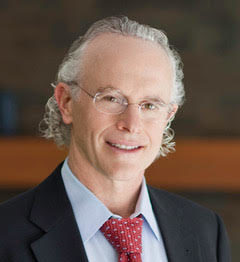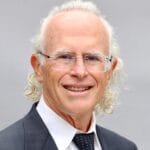
I’ve observed the inner workings of nursing homes for 30 years. Excellent homes run by outstanding administrators can fall apart immediately with their departure. The complexity of residents continues to increase, leading to operational and care delivery challenges unlike any we have seen before.
It is fanciful to think that a single individual is capable of comprehending all of the complexities that impact a nursing home’s workflow. If the nursing home industry is going to effectively take care of the most complex population that our society has ever faced, it must take a team-based approach. For teamwork to work on the front lines, it must start at the leadership level. The Patient-Driven Payment Model will highlight this need in ways we have never seen before. Its focus on clinical outcomes requires the engagement of physicians with expertise in geriatrics.
Excellence in clinical practice as a key to business success has been a guiding light throughout my career. As Executive Director of the nursing home QIN-QIO in California three years ago, effectively influencing nursing home operations was my priority. Implementation science, with a focus on combined system and culture change was our mission. The need to train a clearly defined facility leadership team was apparent. Unfortunately, our efforts to encourage facilities and large chains to take this approach were often met with a “deer in the headlights” response. There were too many fires to put out, too many regulatory requirements to deal with, to make time for yet another training program.
When I became the CEO of an organization overseeing the largest nursing home chain in California, I was faced with a challenge. Years of inertia and embedded beliefs stood before me. The traditional focus in the nursing home industry is to train administrators and directors of nursing for very specific tasks. There is rarely a focus on engaging the medical director as a team member, much less training them to be part of the leadership team. The director of staff development, whose purpose should be clear from their title, is often overwhelmed with multiple competing tasks. They are rarely seen as an integral member of the leadership team. If I was going to practice what I had been preaching, it was time to do something about this.
LMG, or Leadership and Management in Geriatrics, is a program that has successfully trained individual leaders in geriatrics for nearly two decades. The program was conceived on the notion that clinicians are rarely taught anything about the business of their trade. That triggered the California Geriatric Center funded by HRSA, to collaborate with the California Association of LTC Medicine (CALTCM) to develop this program to address the needs of the various managers and leaders in the long term care continuum to take charge and lead. I had been on the LMG faculty for several years and was impressed with the results.
Recognizing the lack of team-based leadership training we developed a nursing home specific version of LMG (LMG-NH) for the leadership teams of the facilities our organization oversaw. The program brought NHA’s, DON’s, DSD’s and medical directors together for a two-day training program. Each team was tasked with a practice improvement project that was aligned with their facility’s priorities. Over the course of four successive programs, we put nearly seventy facilities through this training. We learned from each program and fine-tuned our training as we went along. A lot of valuable lessons were learned in the process, the greatest being the validation of the impact of true team-based problem solving.
Nursing home administrators and directors of nursing alike rarely receive formal training in effectively leading teams. Medical directors also suffer from a lack of training in this area. Directors of staff development are the unsung heroes of nursing homes, and often are the team member with the best grasp on a facility’s weaknesses. They are rarely included on the leadership team, and almost never provided with training to be an effective member of the team. By bringing the whole team together for training, we teach key aspects of leadership and management to the entire facility leadership team. LMG-NH utilizes role-playing exercises for issues such as dealing with a difficult surveyor to working with a challenging physician. Theory bursts help both individuals and teams learn key pearls, such as how to have effective and productive conflict. Mentoring and coaching focused on a facility team’s specific performance improvement project starts in the two-day program and continues for several months afterwards, resulting in a successful and sustainable leadership model.
A program such as this must have support from ownership. There needs to be a clear commitment to the concept of the leadership team. If the NHA doesn’t accept the premise of the leadership team, it won’t happen. If the facility doesn’t make it obvious to the medical director that their time and efforts are valued and necessary, they won’t show up. The strongest existing teams soak up the training and utilize it to become even better. The weaker teams express resistance to change, and struggle to improve. The training program itself is a laboratory by which to observe facility teams in action, and presents a golden opportunity to identify teams that need improvement.
Achieving successful combined system and culture change requires a commitment to change. In today’s world of increasing clinical complexity, there is no way that a NHA or DON alone can effectively run a nursing home. It truly takes a team approach that integrates the necessary clinical expertise.
With PDPM on the horizon, it is critical to seamlessly integrate the medical director into the leadership team. The California Association for Long Term Care Medicine, in conjunction with the Society for Post-Acute and Long Term Care Medicine is looking to bring LMG-NH to facilities and chains that are eager to embrace the concept of a truly comprehensive and effective facility leadership team.
Michael Wasserman, M.D., is President of the California Association of Long Term Care Medicine (CALTCM). He recently served as CEO for Rockport Healthcare Services. He was formerly the Executive Director, Care Continuum, for HSAG, the QIN-QIO in California. He is a fellowship trained geriatrician and certified medical director and has worked in the long term care profession for thirty years.





